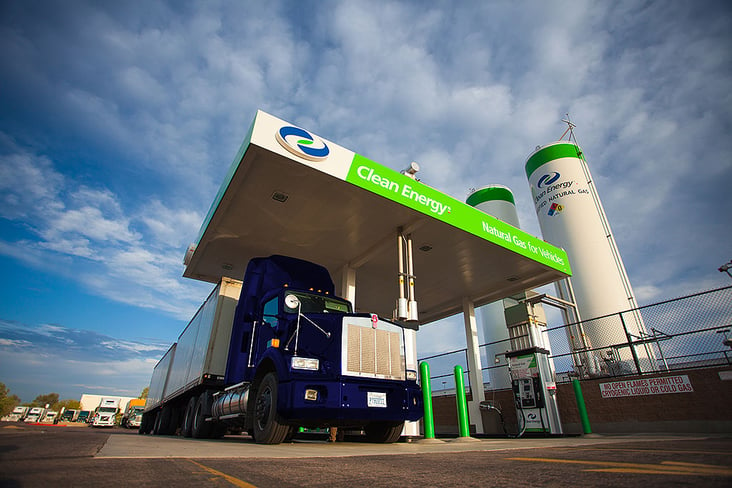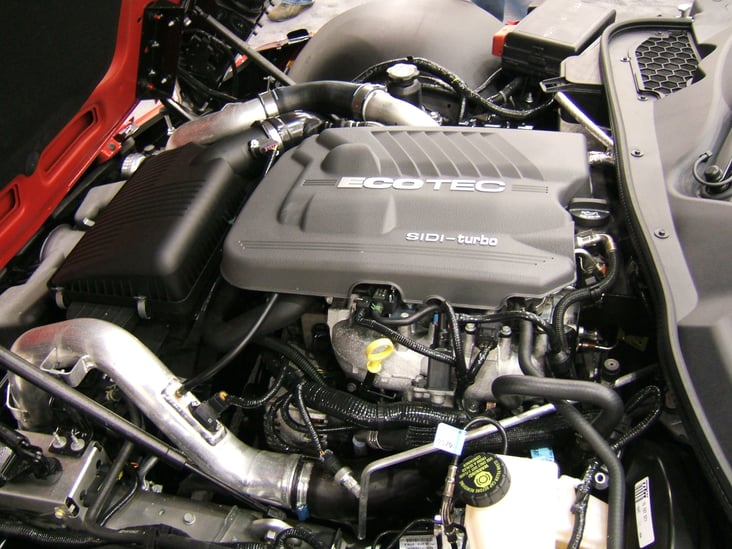This post is one in a series featuring the complete slate of advanced energy technologies outlined in the report This Is Advanced Energy.

Photo courtesy of Clean Energy Fuels.
Compressed Natural Gas (CNG) and Liquefied Natural Gas (LNG) are gaining market share as transportation fuels. The technologies for producing, storing and using both CNG and LNG are well developed. With CNG, pipeline natural gas is compressed to 3,000 to 4,000 pounds per square inch (psi) and stored in a pressurized tank on board the vehicle. CNG fueling stations include all the equipment necessary to take natural gas from the local distribution system, compress it, and refuel the vehicles. With LNG, the natural gas must be cooled to about -260°F at which point the methane (the main constituent of natural gas) turns to a liquid. The LNG is stored in insulated cryogenic tanks at the refueling station and on board the vehicle.



